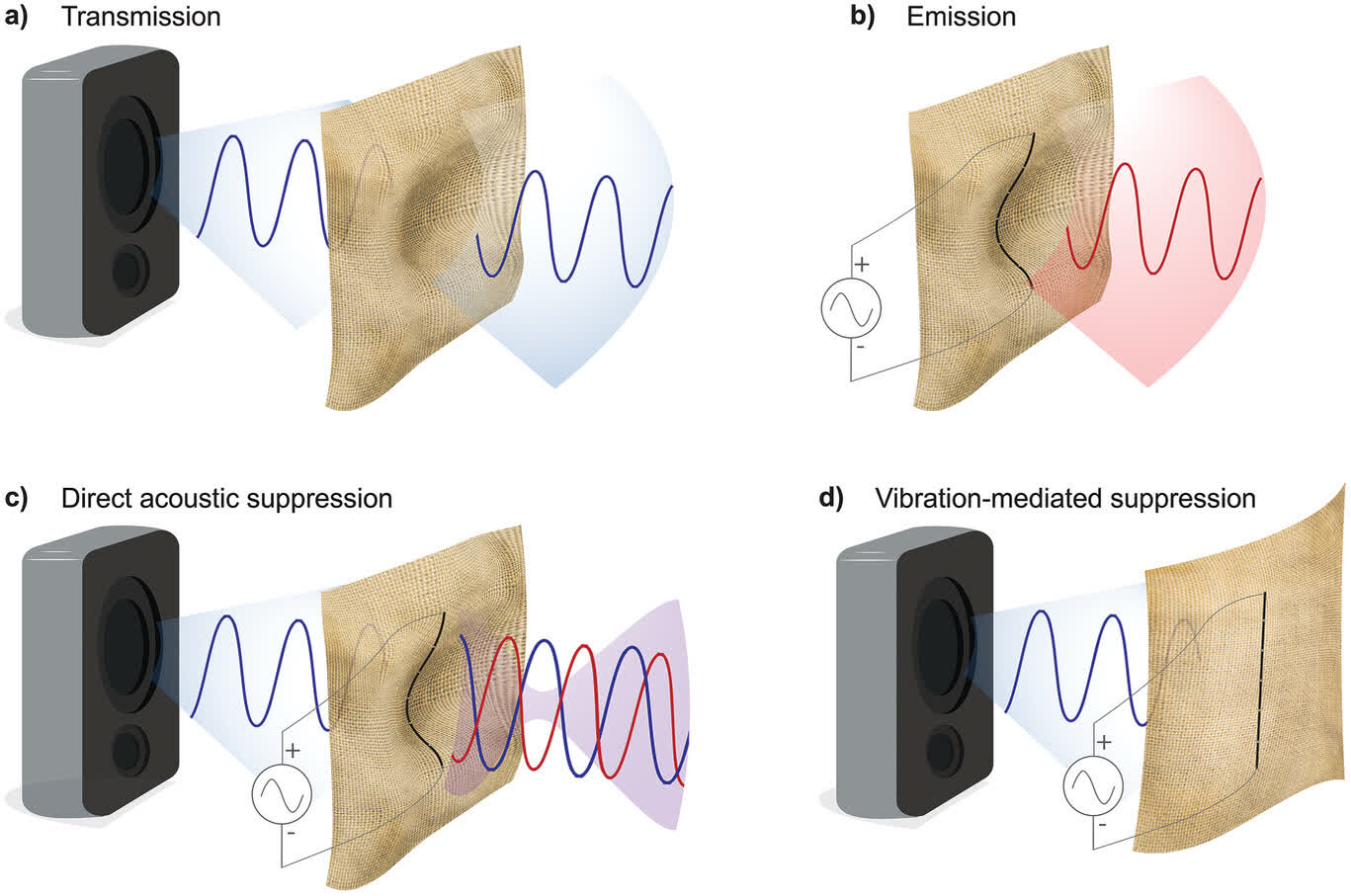The big picture: Researchers from the Massachusetts Institute of Technology have developed a multi-modal fabric that is highly effective at filtering out sounds. With more tweaking and a solid commercial strategy, the tech could bring active noise canceling beyond the realm of headphones.
The work, presented in the journal Advanced Materials, builds on earlier research to create a silk-like fabric that can act as a microphone and amplify sound. Along the way, the team realized their material could also be used to filter out sounds. They took the latter idea and ran with it.
The specially crafted fabric, made out of piezoelectric fiber, is barely thicker than a human hair. When voltage is applied, the material vibrates and when done right, can be tuned to cancel out incoming sound in much the same way that noise-canceling headphones work.
This method is useful in small spaces but isn't effective at room scale. To tackle this challenge, they needed a different approach. Researchers discovered that holding the fabric completely still through the use of voltage turned it into a sort of sound barrier that works like a mirror, reflecting sound back toward the source.

In testing, the direct suppression mode (like noise canceling headphones) was able to reduce the volume of sounds by up to 65 decibels. In the "still" mode, sound transmission fell by 75 percent.
While promising, there's still a lot more work needed before even considering a commercial rollout. The team needs to conduct additional testing to see how changing variables like the number of fibers, the direction they are sewn, and the voltage supplies impacts performance.
First author Grace Yang said this is just the beginning, as there are "a lot of knobs we can turn" to make the tech really effective.
They also need to figure out the best way to market it commercially. Yoel Fink, an MIT professor and co-author of the research, told MassLive that the material is just too new right now, and he doesn't even know what the market for it is.
